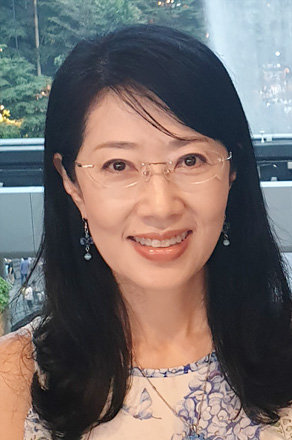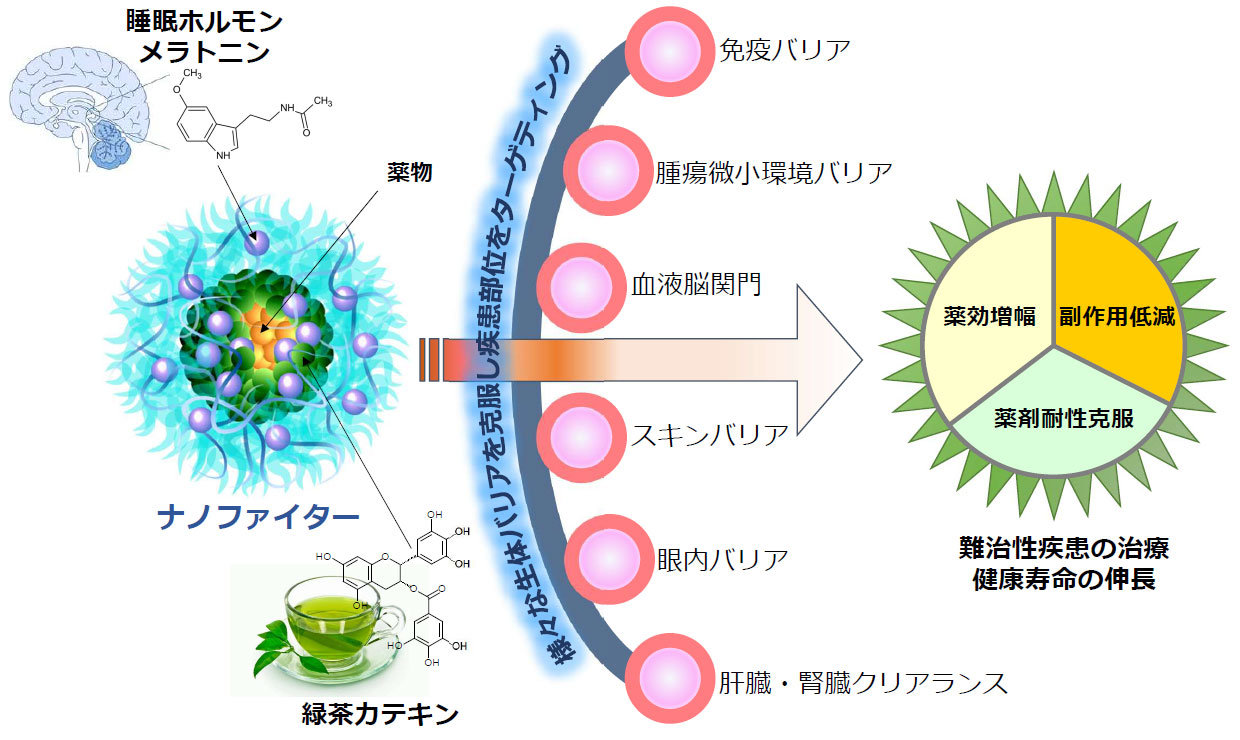
Nanoparticles to fight intractable diseases and aging with wisdom from the body and sourcing from the nature
Laboratory on Anti-Disease Nano-Fighter
Professor:CHUNG, Joo Eun
E-mail:
[Research areas]
Biomaterials, Drug delivery system, Nanomedicine, Cancer therapy, Anti-aging
[Keywords]
Biocompatible polymers, Nanoparticle, Non-invasive treatment, Targeted delivery, Synergy, Green tea catechin, Melatonin
Skills and background we are looking for in prospective students
No special expertise or skills are required. It is important to have a scientific curiosity, enthusiasm, and a sense of responsibility to seriously challenge for world-class research and make impacts on human health and society.
What you can expect to learn in this laboratory
Students can experience and acquire multidisciplinary knowledge and techniques including polymer synthesis, nanoparticle formulation, various analytical techniques using chemicals, cells, and animals, while carrying out the cutting-edge projects. Students are trained to develop logical thinking, meticulousness, perseverance, troubleshooting ability, insight, and research ethics through processes of experiments, discussions, presentations, and scientific writing practiced at the professional level.
【Job category of graduates】 University faculty, Postdoctoral fellow, Patent examiner, Chemical/Pharmaceutical industry
Research outline

Figure 1: Nature-sourced nano-fighter for the treatment of intractable diseases and extension of healthy life expectancy.
We develop unprecedented nano-delivery systems made of natural compounds such as green tea catechin and melatonin (a sleeping hormone in the brain), that can treat various intractable diseases and aging-related damages to overcome the limitations of current treatment. (Fig. 1). The unique nanosytems can deliver various types of drugs such as proteins, peptides, small molecules, and nucleic acids with high concentrations in a targeted manner to the disease sites of tumors, the brain, the posterior eye segment, etc. where drug delivery seriously is limited due to complicate multiple biological barriers. The nanosystems enable reducing the adverse effect (one of major problems of conventional drug treatment), amplifying drug efficacy through synergistic effects due to the intrinsic therapeutic efficacy derived from green tea catechin and melatonin, in addition, overcoming drug resistance which is developed by most drugs.
Key publications
- N. Yongvongsoontorn, J. E. Chung, S. J. Gao, K. H. Bae, M. H. Tan, J. Y. Ying, M. Kurisawa, Carrier-enhanced anticancer efficacy of sunitinib-loaded green tea-based micellar nanocomplex beyond tumor-targeted delivery, ACS Nano 13, 7591-7602 (2019).
- K. Liang, J. E. Chung, S. J. Gao, N. Yongvongsoontorn, M. Kurisawa, Highly augmented drug loading and stability of micellar nanocomplexes comprised of doxorubicin and poly(ethylene glycol)-green tea catechin conjugate for cancer therapy, Advanced Materials 30, 1706963 (2018).
- J. E. Chung et al. Self-assembled nanocomplexes comprising green tea catechin derivatives and protein drugs for cancer therapy, Nature Nanotechnology. 9, 907-912 (2014).
Equipment
Dynamic light scattering system, UV-visible spectroscopy, HPLC, NMR, Scanning electron microscope, Cell/Animal research equipment, IVIS imaging system
Teaching policy
Students will be guided to perform the cutting-edge projects with enthusiasm and motivation through fully understanding the scientific and social significance of their research. Critical thinking, meticulousness, and perseverance are intensively practiced through vigorous discussion, presentation, scientific writing with multi-disciplinary approaches at the professional level. Core time: 10-17.
[Website] URL : https://chungje-lab-en.labby.jp/